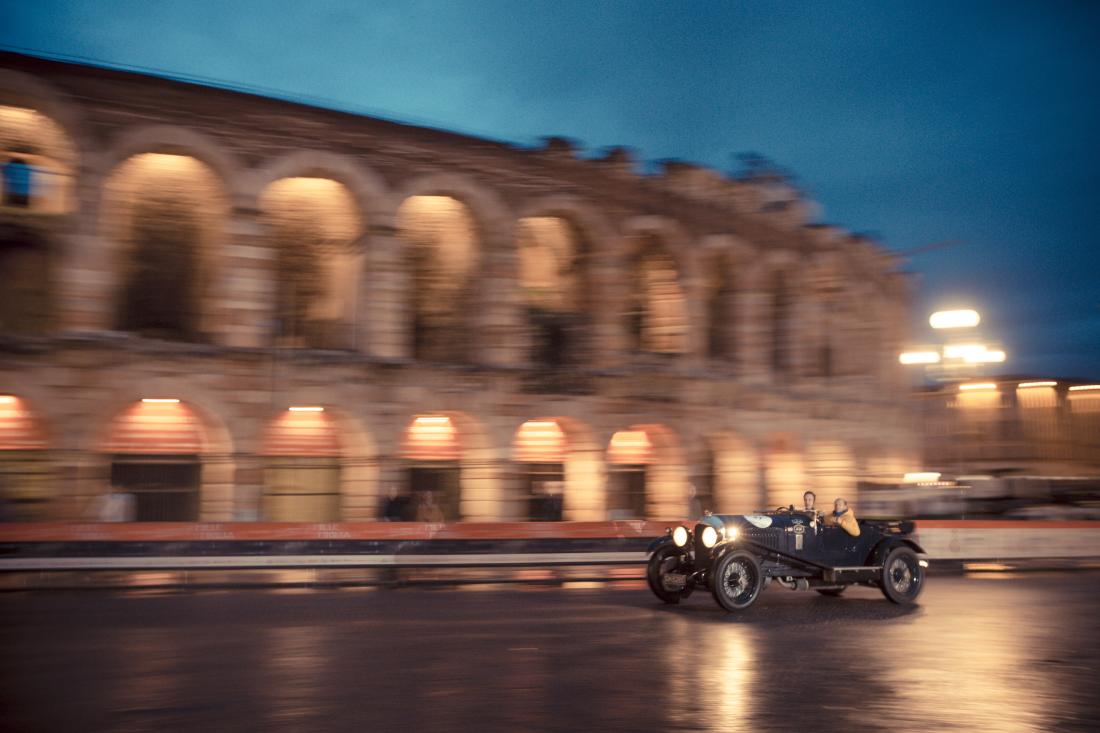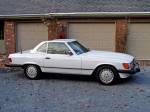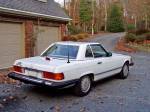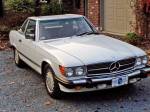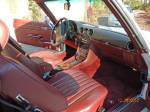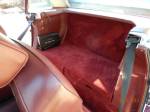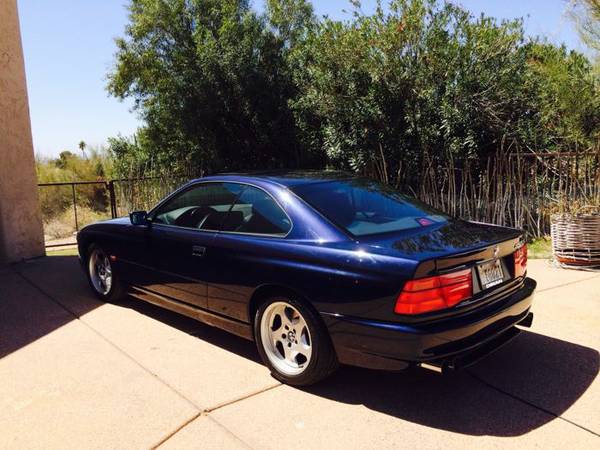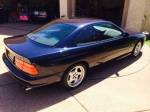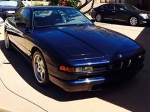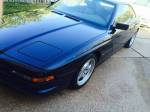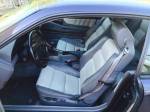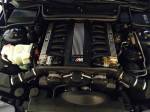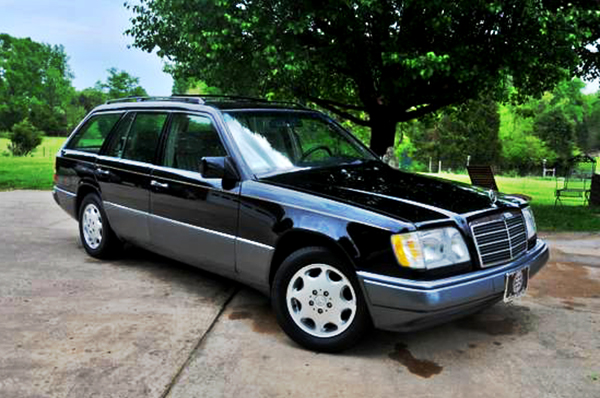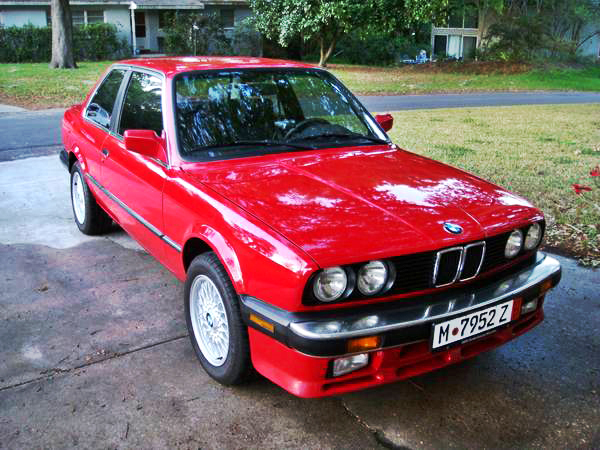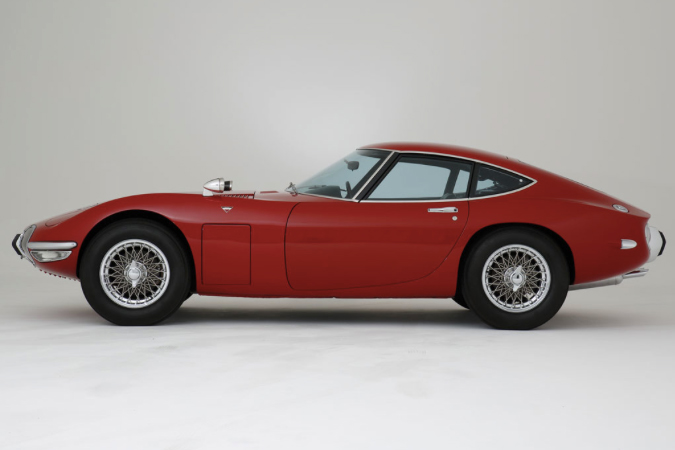The 2000GT’s story starts not with Toyota but with Yamaha, who decided to design a sports car after years of producing motorcycles. Yamaha first marketed its design to Nissan, who ended up not taking on the project, so the car was then marketed to Toyota, who saw this tiny little sports car as an opportunity to shed its reputation of producing rather conservatively designed automobiles. Some inside the company might have considered this move to be a gamble for a company who had never sold such an automobile, but it was clear that the 2000GT could give Toyota and Yamaha’s designers and engineers a chance to compete on the world stage. The 2000GT was powered by a 150-horsepower variant of the inline-six cylinder engine that was originally used in the Toyota Crown, and Yamaha adapted it for use in a sports car by installing double overhead camshafts. Tipping the scales at just 2,400 pounds, with a 49/51 weight distribution, it was quite light on its feet, and it could reach a top speed of 135 mph. Despite being considered the underdog, the 2000GT certainly got a lot of exposure. Both Toyota and Carroll Shelby found success with the 2000GT on the race track. It won the 1967 Fuji 24 Hour endurance race in the hands of its manufacturer, and Shelby’s team took four chequered flags in the 1968 season with the 2000GT. One specially constructed example even found its way onto the silver screen in the James Bond film You Only Live Twice, with Toyota having to produce a convertible version in order to fit actor Sean Connery comfortably. Even though the car appeared onscreen for a small portion of the film, it monumentally increased the 2000GT’s exposure to the public, along with Toyota’s. Toyota initially planned to produce and sell nearly 1,000 examples annually, but by the time production ceased in 1970, just 351 examples had been built. Many potential consumers found it difficult to justify the $7,000 cost of the 2000GT, as that was $1,000 more expensive than a Jaguar E-Type or Porsche 911 and over $2,500 more expensive than a Chevrolet Corvette, especially considering that Jaguar, Porsche, and Chevrolet were much more established, especially in the United States, than Toyota was at the time. Whilst Toyota did not hit is goal of 1,000 examples annually, the 2000GT definitely received all the exposure it was due thanks to its racing endeavours with Carroll Shelby and its stint on the silver screen.
Chassis MF10-10174 was produced on 19 January 1968, finished in Pegasus White, and delivered new to its home market of Japan as a right-hand drive model. This 2000GT, being offered today from its native country, has recently completed a restoration, where it was repainted in a striking shade of burgundy and fitted with chrome Borrani wire wheels. The brilliant paint colour is beautifully accented by the chrome details on the car, and it attractively showcases the design features of this stunning sports car. Surly this would be a wonderful example to drive and enjoy, as it showcases Toyota’s brilliant European-inspired design. The 2000GT is a hugely important car in the history of the automobile. Without the 2000GT, there might not have been a Honda NSX or a Nissan 240Z, and the industry on the whole might have looked very different from what it is today. The 2000GT shattered the preconceived notions of what the world thought a Japanese car could be, and it changed the automobile industry for the better. Collectors have finally come to realise the importance of these wonderful little sports cars, and they have become quite desirable in recent years. This 2000GT oozes a sporting elegance that is wonderfully stated by its dark red paint and Borrani wire wheels, which work to accentuate its brilliant design. It would be a wonderful example to drive and enjoy. 150 bhp, 2,000 cc Yamaha DOHC hemi-head inline six-cylinder engine, triple Solex twin-choke side-draft carburettors, five-speed fully synchromesh manual transmission, four-wheel independent suspension, and four-wheel power-assisted Dunlop disc brakes. Wheelbase: 2,329 mm
- Chassis no. MF10-10174
- Beautifully restored in dark red with chrome Borrani wire wheels
- Japan’s iconic sport’s car

Lot 165 – 1956 Porsche 356 A Carrera 1500 GS/GT Speedster by Reutter
€780,000 – €900,000 [moto+match estimate €900,000]
In addition to retaining its original matching-numbers Type 547/1 engine, which is a highly desirable and rare distinction, this early 356 Carrera Speedster claims some unusual specifications that bridge the GS and GT variants. According to the Kardex warranty card, this 356 A was originally distributed to the United States for retail by Max Hoffman’s renowned dealership in New York in August 1956. Records of Karrosserie Reutter’s indicate that chassis number 82189 was originally finished in white paint and fitted with a black top and matching complementary interior trim. Although this car was officially designated as a Carrera GS, it possesses some features of the forthcoming performance-positioned GT variant that are believed to be original to the car. According to one Speedster expert, this Carrera was equipped by the factory with an upgraded engine, headlight grilles, and a 550 Spyder-style wing mirror, and it was appointed without a heater, making it one of a handful of GS examples with features of the forthcoming GT trim package. By some accounts, this sensational Porsche was raced at Sebring, Daytona, and Riverside in its early years. Then, in 1992, it was re-imported to Germany and acquired a year later by collector Hans Reuter, who oversaw an exacting restoration that prepared the car for enjoyable touring. In addition to rebuilding the legendary Carrera engine to Spyder performance specifications, the restoration saw to several tasteful upgrades, such as the addition of Koni Classic adjustable dampers, a 356 B Super 90-specification camber compensator for the rear suspension, a 12-volt electrical system, an upgraded ignition system, Argus steel-braided oil lines, and new Michelin XAS tyres. The 356 was also equipped with an original set of Rudge wheels, which are rare items that alone are estimated to value up to €35,000. The opportunity was additionally taken to endow the car with a couple of physical cues that were more becoming of its GT specifications, including the retro-fitting of a louvered engine lid and the addition of a stainless steel, Sebring-style, mesh-covered, single outlet exhaust. In this handsomely restored state, though painted red at the time, the car was depicted in Dr Michel Thiriar’s 1998 book, Porsche Speedster: The Evolution of the Porsche Lightweight Sportster, 1947–1994. This beautiful 356 Carrera has most recently been subjected to a bare metal repaint in its original white finish, and it has also been re-trimmed with a new red interior. During that time, the engine was fully serviced by Porsche specialist Orlando in Italy. The Speedster is currently equipped with Cibie spot lamps, and it is also accompanied by side-screens, a correct tool kit, a tonneau, and a proper spanner for the Rudge wheels. It retains its original matching-numbers Type 547/1 engine, and as such, this early Carrera Speedster would certainly draw significant favour at discerning concours d’elegance. Along with its visual appeal, the car can be equally enjoyed for its high-revving performance, with heart-racing glimpses of the special flat-four’s dual-cam torque. As the 60th anniversary of Porsche’s ground-breaking 3rd and 4th overall finish at the 1954 Carrera Mexican road race is soon approaching, there could hardly be a more opportune time to acquire an important early Carrera such as this handsome Speedster. The wonderful product of Stuttgart’s race-bred engineering abounds with authentic details, like a correct GS/GT tachometer and the original Weber fuel-pressure regulator, which is a rare and desirable mechanical component. Future ownership can look forward to the unmistakable growl of the legendary Carrera motor, which promises the singular gravitas of the Speedster’s unique, low-screened, open-top motoring experience. 110+ bhp, 1,498 cc DOHC air-cooled Type 547/1 horizontally opposed four-cylinder engine with twin Solex 40 P11-4 carburettors, a four-speed manual transaxle, four-wheel independent suspension with shock absorbers, and four-wheel hydraulic drum brakes. Wheelbase: 2,100 mm
- Chassis no. 82189
- Engine no. 90638
- Original matching-numbers Carrera engine
- Rare combination of Carrera GS and GT trim levels
- Copy of original Kardex warranty card
- Desirable Rudge wheels
- Ideal for Porsche club events and vintage rallies

Lot 166 – 1969 De Tomaso Mangusta
€160,000 – €210,000 [moto+match estimate €250,000]
The Mangusta offered here was beautifully restored for its present owner with painstaking attention to detail, and it is likely amongst the finest examples in existence. It is freshly completed and has been refinished in what is believed to be its original factory colours, a dazzling green (simply called Lime, found below a later colour change to red) over black leather upholstery, which is a combination that is oh-so-appropriate for a sports car produced at the wild end of the Swinging Sixties. Unlike many of these cars, which have been hot-rodded over the years, this example has always been preserved in very much its original specification, which is something that the owner held true to during its restoration. The early 289 V-8 and ZF1 transmission, which is the same as was used in the GT40, were fully rebuilt, and care was taken to restore all components in their original finish. The car retains the original sand-cast wheels, with their slightly rough texture, and dials lettered in Italian, suggesting that this Mangusta may have originally been a European-delivery example. Importantly, the car retains its very rare original jack and tool roll, as well as the remote-starter button under the bonnet, allowing a mechanic to turn over the engine during maintenance. This Mangusta is currently domiciled in the UK, and it will be sold with its V5C registration and recent MOT test certificate. It is interesting to note that mangusta translates to “mongoose”, which is one of the few natural enemies of the cobra. The name is indicative of the performance to which the ferocious Mangusta aspired and which this beautifully restored example can undoubtedly achieve. 271 bhp, 289 cu. in. overhead-valve Ford V-8 engine, five-speed ZF manual transmission, unequal length tubular wishbone front suspension with coil springs and anti-roll bar, wide-base unequal length wishbone rear suspension with trailing arms, coil springs, and anti-roll bar, and four-wheel power-assisted Girling disc brakes. Wheelbase: 2,500 mm
- Chassis No. 8MA890
- A beautiful, muscular icon of the 1960s
- The most desirable quad-light, early-production iteration
- Equipped with the high-performance Ford 289 V-8
- Freshly restored in its stunning original colour
- Offered with its original jack and rare tool set

Lot 189 – 1973 Fiat 130 Coupé by Pininfarina
Without Reserve €10,000 – €15,000 [moto+match estimate €18,000]
After its debut at the 1969 Geneva Motor Show, the Fiat 130 topped the Italian automaker’s line-up. It boasted such features as standard power-assisted steering and four-wheel disc brakes, and it also ushered in Fiat’s first use of an alternator rather than a generator to produce electricity. Hidden beneath its sharp, attention-grabbing lines was a choice of new overhead-camshaft V-6 engines in either 2,866-cubic centimetre or 3,235-cubic centimetre form, with this example utilising the latter. The new V-6 line was based on the 128 Type A powerplant and was developed by a noted Ferrari engine master, engineer Aurelio Lampredi. With its own Pininfarina-penned design on the inside and out, the 130 Coupé wowed at the 1971 Geneva Salon, proving it to be even more striking than the four-door saloon. It was a large coupé that featured a host of luxury features inside, like state-of-the-art fibre optics to light its instrument panel and switches. Just a hair under 4,300 examples of the 130 Coupé were built, and amongst those was this delightful, original low-mileage example. It has since been in the long-term ownership of Francesco Stanguellini, who’s racing pioneer father Vittorio Stanguellini ran with the likes of Enzo Ferrari and the Maserati brothers in Modena. This 130 Coupé has been an integral part of the Stanguellini Museum in Modena, which is a hidden gem known only to true cognoscenti. It has been kept in impressively fine original condition and is equipped with power steering and rare air conditioning. This car appears ready to be enjoyed immediately, as it is motivated with willing V-6 power. It has elegant and timeless style, courtesy of Pininfarina, which befits its grand touring aspirations. 165 bhp, 3,235 cc overhead-camshaft V-6 engine, three-speed Borg Warner automatic transmission, torsion bar front and coil-spring rear independent suspension, and four-wheel disc brakes. Wheelbase: 2,720 mm
- Chassis no. 130BC 0002020
- Long-term ownership by Francesco Stanguellini
- Fewer than 32,000 kilometres from new
- On display for many years in the Stanguellini Museum





